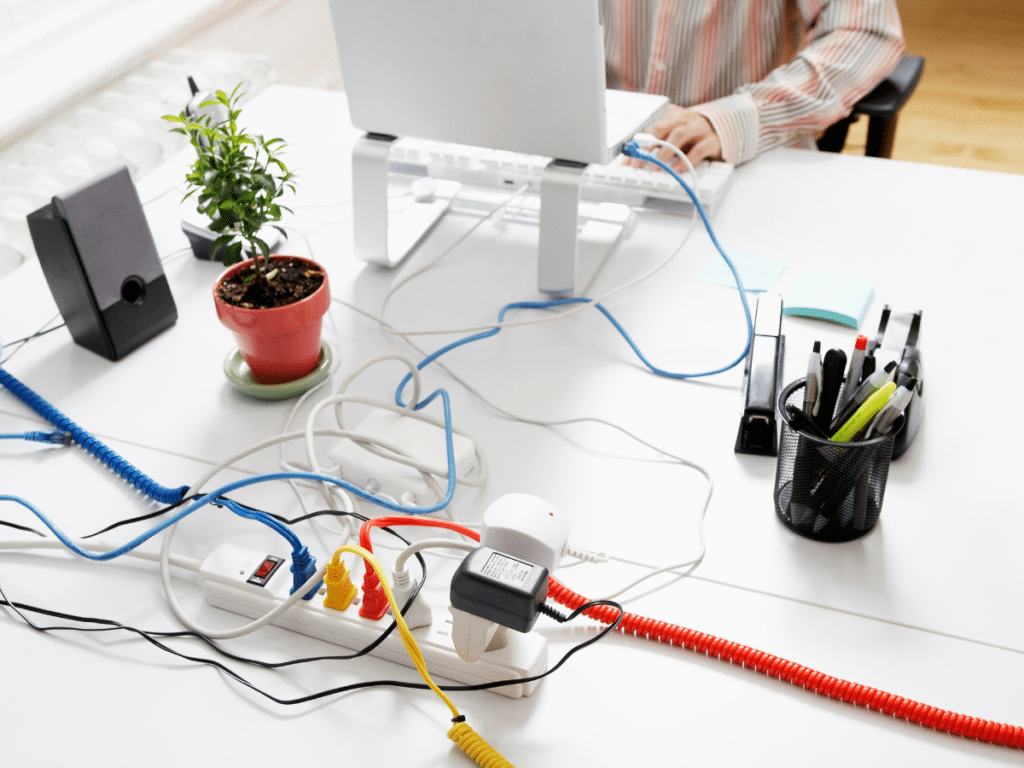When it comes to electrical work in our homes, it’s important to know the basics. One common task that many homeowners face is installing electrical outlets and switches. While these may seem like simple tasks, it’s important to understand the different types of outlets and switches and when it’s appropriate to tackle the installation yourself or call in a professional electrician. In this blog post, we’ll discuss the basics of electrical outlet and switch installation, including common types of switches and outlets, and when it’s best to leave the job to the experts.
Exploring the Different Types of Electrical Switches and Outlets
When it comes to electrical work in our homes, understanding the different types of electrical switches and outlets is essential. There are various options available, each designed to serve a specific purpose. By exploring these different types, you can make informed decisions about the best switches and outlets for your home.
Let’s start with electrical switches. There are three common types: toggle switches, rocker switches, and dimmer switches. Toggle switches are the most traditional, with a lever that can be flipped up or down to turn the lights on or off. Rocker switches, on the other hand, have a flat surface that can be pressed on one side or the other. They provide a more modern look and are often used for light switches. Dimmer switches allow you to adjust the brightness of the lights, creating ambiance in any room.
When it comes to electrical outlets, there are several options to consider. Standard outlets, also known as duplex outlets, are the most common. They have two vertical slots for the plugs and a small round hole for the grounding pin. Ground fault circuit interrupter (GFCI) outlets are essential in areas where water is present, such as bathrooms and kitchens. They provide extra protection against electric shock by quickly shutting off the power if a ground fault is detected. Another type to consider is the USB outlet, which includes USB ports in addition to the standard electrical sockets, making it convenient for charging smartphones and other devices.
When installing electrical outlets or switches, it’s crucial to choose the right type for the specific location and purpose. This ensures both safety and functionality. If you’re unsure about which type to choose, consulting with a professional electrician from ACE Home Services is always a wise decision.
Deciding on the Best Switches and Outlets for Your Home
When it comes to deciding on the best switches and outlets for your home, there are a few factors to consider. The first thing to think about is the specific location and purpose of the outlet or switch. Are you installing electrical outlets in a kitchen or bathroom where water is present? If so, it’s important to choose a ground fault circuit interrupter (GFCI) outlet to provide extra protection against electric shock. GFCI outlets are designed to quickly shut off the power if a ground fault is detected, making them essential for areas where water and electricity could come into contact.
Another factor to consider is the aesthetic appeal of the switches and outlets. Do you want a traditional, classic look or a more modern, sleek appearance? Toggle switches provide a more traditional look with a lever that can be flipped up or down, while rocker switches have a flat surface that can be pressed on one side or the other. Dimmer switches are perfect for creating ambiance in any room, allowing you to adjust the brightness of the lights to your liking.
In addition to functionality and aesthetics, convenience is also important. USB outlets have become increasingly popular, as they include USB ports in addition to standard electrical sockets. This makes it convenient for charging smartphones, tablets, and other devices without the need for bulky adapters. USB outlets are a great choice for areas where charging devices is a common occurrence, such as bedrooms or living rooms.
Lastly, it’s always a good idea to consult with a professional electrician when deciding on the best switches and outlets for your home. They can provide valuable insight and expertise, ensuring that you choose the right types of switches and outlets for each specific location. The professional electricians at ACE Home Services are trained to assess your needs and make recommendations based on safety standards and code requirements.
By considering factors such as location, purpose, aesthetics, convenience, and consulting with a professional, you can make informed decisions and choose the best switches and outlets for your home.
The Dos and Don’ts of DIY Outlet and Switch Installation
When it comes to installing electrical switches and outlets in your home, there are a few important dos and don’ts to keep in mind. These guidelines can help ensure that your installation is safe, functional, and up to code.
First and foremost, do your research and educate yourself on the proper techniques and safety precautions for installing electrical switches and outlets. There are plenty of online resources and tutorials available that can provide step-by-step instructions and tips. Understanding the process and requirements will give you the confidence to tackle the installation on your own.
However, it’s important to know your limits. If you don’t have experience or expertise in electrical work, it’s best to leave it to the professionals. Electrical work can be complex and dangerous if not done correctly. If you’re unsure about any aspect of the installation, it’s better to call in a licensed electrician who can ensure that the job is done safely and efficiently.
It’s important to always turn off the power before beginning any electrical work. This may seem obvious, but it’s a crucial step that can prevent accidents and injuries. Locate the circuit breaker or fuse box and turn off the power to the area where you’ll be working. Use a voltage tester to confirm that the power is off before proceeding.
When it comes to outlets, make sure to choose the right type for the specific location. For example, GFCI outlets should be used in areas where water is present, such as kitchens and bathrooms. These outlets provide extra protection against electric shock by quickly shutting off the power if a ground fault is detected.
Finally, do invest in high-quality materials and tools. This is not an area where you want to skimp on quality. Using subpar materials or tools can lead to poor performance, safety hazards, and the need for frequent repairs or replacements.
Now, let’s talk about some important don’ts. First and foremost, don’t attempt to do any electrical work without proper permits or inspections. In many areas, electrical work requires permits and inspections to ensure that it meets safety standards and building codes. Failing to obtain the necessary permits or skipping inspections can result in fines, insurance issues, and potential safety hazards.
Another important don’t is to never work on live circuits. As mentioned earlier, always turn off the power before starting any electrical work. Working on live circuits can put you at risk of electrical shock or other injuries. Take the time to locate the correct circuit breaker or fuse and turn off the power to the area you’ll be working on.
The Importance of Hiring a Professional Electrician for Your Installation
When it comes to electrical work, there are certain tasks that are best left to the professionals. Electrical outlet and switch installation is one of those tasks. While it may seem tempting to save money and do it yourself, hiring a professional electrician for your installation is incredibly important.
One of the main reasons to hire a professional electrician is safety. Electrical work can be dangerous, especially if you don’t have the necessary knowledge and experience. Professional electricians are trained to handle electrical installations safely and are familiar with all the necessary safety precautions. They understand the proper techniques and procedures to ensure that the installation is done correctly and up to code.
Another reason to hire a professional is the assurance of quality work. Professional electricians have the expertise to assess your specific needs and recommend the best switches and outlets for each location in your home. They can provide valuable insight into which types of switches and outlets will be most functional and efficient. Additionally, they have access to high-quality materials and tools, ensuring that the installation is done with the best equipment available.
Hiring a professional electrician also saves you time and stress. Electrical work can be time-consuming and complex, especially if you don’t have experience. By hiring a professional, you can relax knowing that the job will be done efficiently and effectively. You won’t have to worry about potential mistakes or the need for future repairs or replacements.
In conclusion, while DIY projects can be fulfilling, electrical outlet and switch installation is not one to tackle on your own. Hiring a professional electrician ensures safety, quality work, and saves you time and stress. When it comes to electrical work in your home, it’s best to leave it to the experts from ACE Home Services. Give us a call for professional guidance and installation work.

